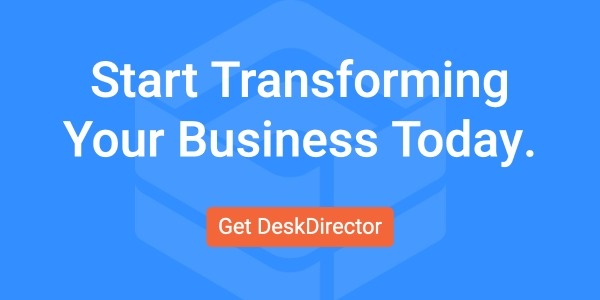According to a recent State of ITSM and ESM Survey Report, 58% of ITSM practitioners admit they either do not have an ITSM framework in place or don’t know if they have one.
Implementing an ITSM framework is an essential step in a business’s maturation. Whether you’re a start-up or a large enterprise, having the proper structure to manage IT processes is necessary to deliver consistent, scalable services.
But what exactly is an ITSM framework, why is it so beneficial, and what are some common examples used worldwide? Read on to gain an understanding of this ever-evolving concept.
What is an ITSM Framework?
ITSM (Information Technology Service Management) is a set of best practices and frameworks that guide the delivery, management, and support of IT services to meet the needs of customers and businesses.
ITSM frameworks help organizations align IT services with business objectives, optimize costs, increase efficiency, and improve customer satisfaction.
They emphasize the importance of process standardization, automation, continuous improvement, and customer-centricity. Numerous ITSM frameworks are in use today, each with its spin on IT service management and its own set of advantages.
The Benefits of ITSM Frameworks
Implementing an ITSM framework comes with many benefits for businesses of all sizes. Some of those are:
- Improved Service Quality: Most ITSM frameworks focus on delivering high-quality IT services that meet the business's and customers' needs. With that goal in mind, ITSM frameworks set the foundation for improved service quality for both internal and external end users.
- Enhanced Customer Satisfaction: ITSM frameworks take a customer-centric approach that helps organizations better understand and meet the needs of their users through best practices and high-quality service management. Frameworks often include parameters for communicating with customers, updating them on ticket statuses, and providing self-help services so they can resolve issues on their own.
- Increased Efficiency: For organizations looking to optimize their IT processes, automate routine tasks, and reduce manual efforts, ITSM frameworks are a great way to do so, resulting in increased efficiency and productivity across all departments.
- Better Communication: Working within a set framework helps IT, HR, and other teams communicate and stay on the same page, leading to improved collaboration and better decision-making.
- Cost Optimization: ITSM frameworks help organizations optimize their IT spending and reduce waste by standardizing service management processes, resulting in cost savings.
4 Most Common ITSM Frameworks
While there are various ITSM frameworks available, some of the most popular ones are:
1. ITIL (INFORMATION TECHNOLOGY INFRASTRUCTURE LIBRARY)
ITIL is one of the most widely adopted ITSM frameworks, consisting of a set of best practices for IT service management that cover a range of processes, such as incident management, change management, problem management, and service desk management.
ITIL’s guiding principles focus on integrating IT into overall business practices.
2. COBIT (Control Objectives for Information and Related Technology)
COBIT is another popular ITSM framework that provides a blueprint for the governance and management of IT. First published in the mid-1990s, COBIT has since evolved to include five core principles, ranging from meeting key stakeholders' needs to separating management for governance.
3. ISO/IEC 20000 (International Organization for Standardization/International Electrotechnical Commission):
ISO/IEC 20000 is a global standard for ITSM that provides a set of requirements for service management processes adopted worldwide.
According to the official ISO website, “The requirements specified in this document include the planning, design, transition, delivery, and improvement of services to meet the service requirements and deliver value.” In other words, organizations use this ITSM framework to align ITSM processes with business needs by using international best practices.
4. MOF (Microsoft Operations Framework)
MOF takes the unique approach of providing guidelines for managing the entire lifecycle of specific IT processes.
In its 23 documents, MOF divides its central process model into four parts, referred to as the service management functions (SMFs): the changing quadrant, operating quadrant, supporting quadrant, and optimizing quadrant, each of which focuses on a different element of the IT environment.
ITSM Frameworks: The Conclusion
For organizations of all sizes looking to enhance their IT processes and keep up with the ever-changing IT service management landscape, implementing an ITSM framework can provide the guidelines you need to introduce successful, consistent processes and techniques in all your service offerings.
Looking for an ITSM solution that follows best practices and enables you to drive higher output with a centralized hub? Sign up to try DeskDirector!









